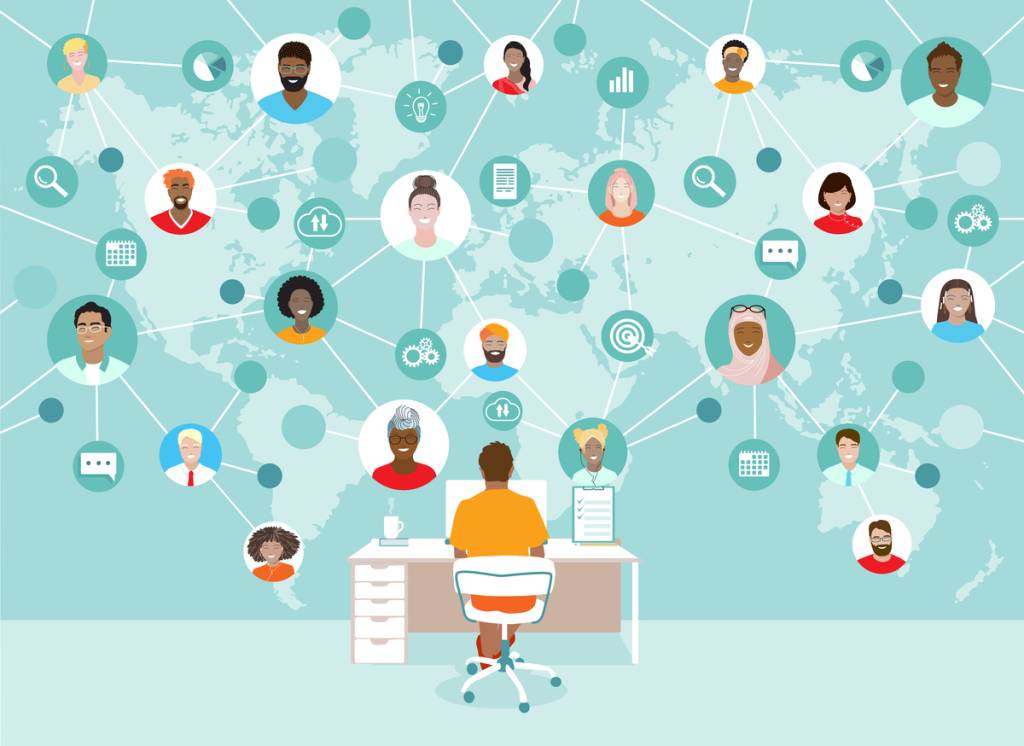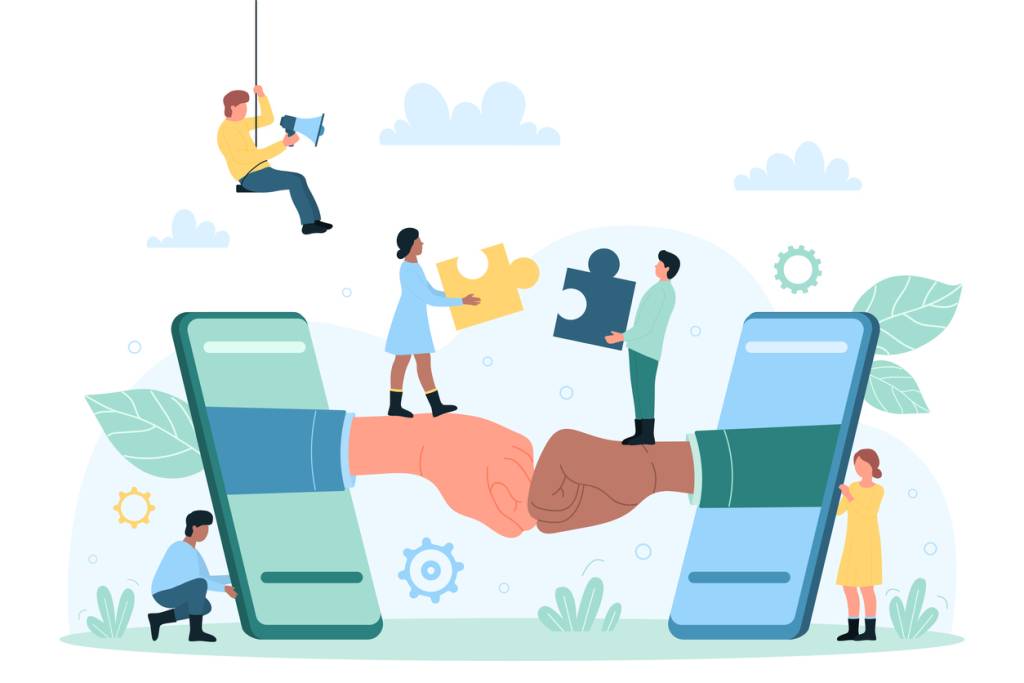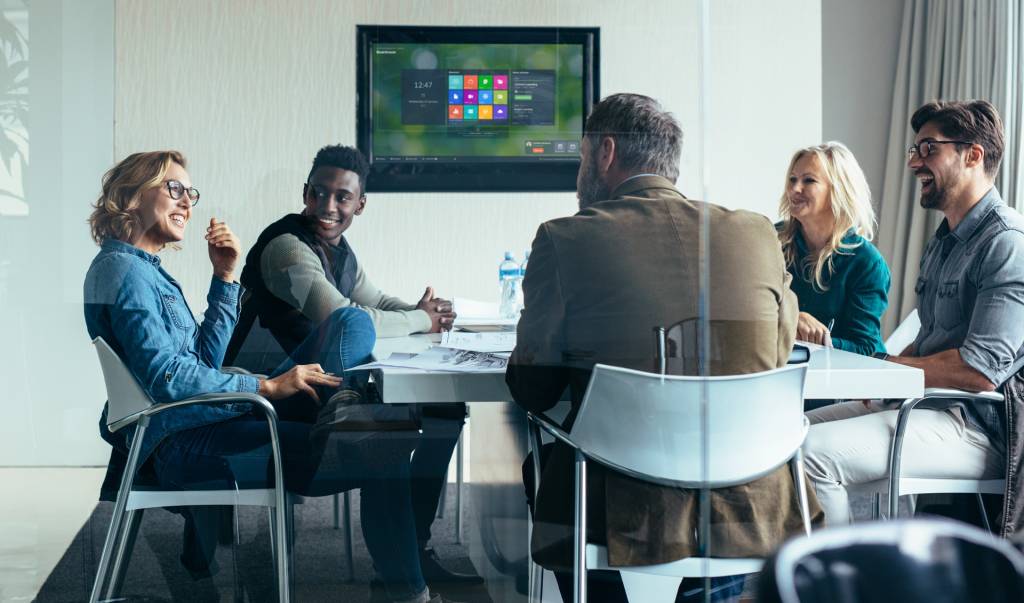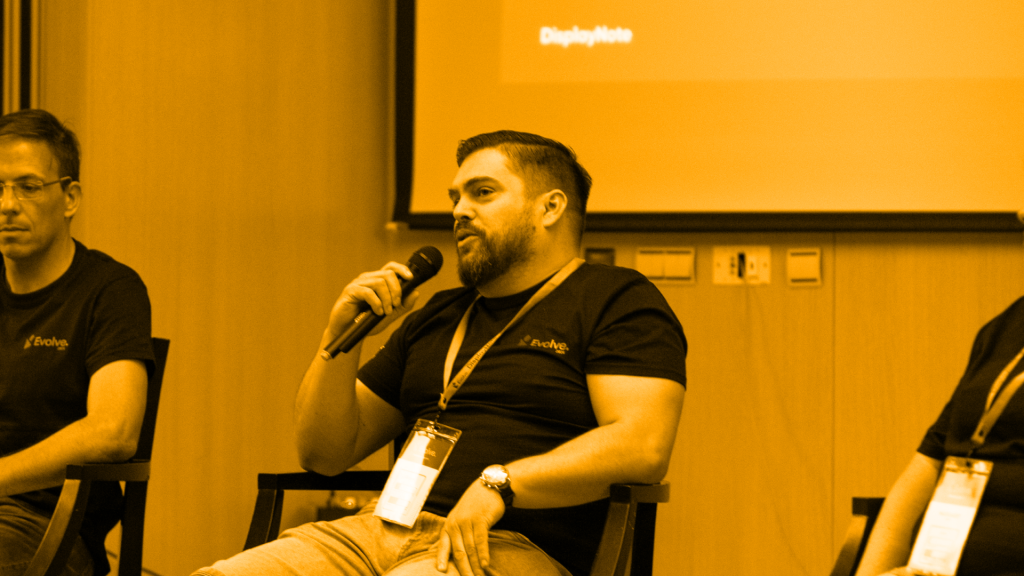
Connecting with colleagues and customers in the hybrid work environment
As we make our way through 2023, communicating and collaborating with colleagues is still a significant challenge as hybrid work models have become a long-term reality for many organizations. Just as important—and possibly even more of a challenge—is keeping employees connected with customers and other business partners who may also be struggling to manage their own hybrid workforce. While balancing both in-person and remote interactions, clear communication with the two most important stakeholders involved—employees and customers —is critical.
One of the big questions at the forefront of many business leaders’ minds is “How can we meaningfully communicate, collaborate, and connect in a hybrid work environment?” These new needs are driving the demand for various technology such as videoconferencing systems artificial intelligence and collaboration software, and this technology has taken on an even more important role in bringing people together. For IT and business leaders alike, this technological transition will require a change in perspective as they explore how existing and emerging technology may be leveraged to build culture and connection in a hybrid world.
Did you know?
Spotify believe that employees are happier and more productive when they have freedom to choose where they work and they feel that it helps them find better ways to communicate and collaborate with one another. That is why they have a ‘Work From Anywhere Program’ that allows them to do just that. Equipping employees with the necessary technology for hybrid or remote working has played a big part in making this a reality.
The value of connection in the hybrid working world
One of the most important factors in building and maintaining an effective and productive workplace is connection. Why? Because connected teams encourage knowledge-sharing, build good working relationships, and drive collaboration. Individuals that feel connected to what they do for a living, who believe and align themselves with their company’s vision, purpose and values, as well as with the people around them, care about producing good work. According to a study by Blueboard ‘’85% of HR professionals strongly agree it’s important for employees to feel connected at work, and 77% of employees agree they want to work at an organisation where they feel connected to the purpose and the people.’’
Customer interactions that once took place in person have also been taking place virtually or through a combination of both. Despite this change, advocacy is still crucial for both keeping and gaining clients.
Connection is also associated with our mental health. Isolation and loneliness have a major impact on our mental health, and this was a huge struggle for people during the pandemic. However, it remains a struggle post-pandemic with a hybrid work model in place for most companies. Therefore, it is important to make sure that it remains easy for employees to connect with one another.
Inclusion and diversity in the workplace are essential as a strong variety of people from diverse backgrounds and abilities provides us with the balance of voices and diversity of thought that every company needs. However, it’s especially important that these groups of people also feel connected to their colleagues and not left out in any way. Therefore, providing the necessary collaboration tools and seeking employee feedback on their needs is essential.

Ways to improve connection with colleagues and customers in a hybrid work environment
In this new, hybrid working world, staying engaged and connected is crucial, however, making sure everyone is on the same page can be challenging. Companies must work with its employees to understand the importance of communicating with key audiences, both internal and external, in order to better meet consumer needs. Here are 3 ways to improve connection with colleagues and customers in the hybrid work environment:
Establish the necessary technology to facilitate connection from all angles
When your team is not in the office full-time, you may see a lapse in communication if you’re not providing them with proper collaboration tools. Whether it be for hiring purposes, customer demos, training or employee communication, technology such as screen sharing software can provide engaging hybrid experiences, ensuring effective collaboration throughout. According to a study from Quixy, 58% of employees working from home have started using workplace collaboration tools more than they were a year ago.
The technology that employers provide in the workplace can define the employee and customers experience, especially in a hybrid setting. By enhancing the digital workplace to accommodate hybrid working, collaboration along with people’s sense of belonging improves across physical and digital spaces. Using up-to-date, advanced technology such as one-touch meeting room software, will enhance creativity, team-building, upskilling, and will have an overall positive impact on your company.
A study from Grammarly found that 87 percent of business leaders surveyed said their teams would not be able to meet their goals without effective communication tools.
Asynchronous vs synchronous communication
When building an effective strategy for workplace communication, asynchronous and synchronous communication should be at the top of your mind. Asynchronous communication is something that doesn’t need to take place immediately. This could include emails, messaging software such as Slack, video recording tools such as Loom, and other quick forms of communication when an action or reaction can wait.
On the other hand, there is synchronous communication – which is the opposite. This consists of scheduled activities such as virtual/in-person meetings, brainstorming sessions, strategy calls, and so on. With synchronous communication it’s very important that good audio and video is taken into account. You never want to start a meeting like this: “Can you hear me?” “Can you see me?” What about now?”. Therefore, it’s important to make sure that your meeting room audio and video simply works, without requiring frequent adjustments and troubleshooting.
Timing and accuracy
When collaborating with a hybrid workforce, it’s important to know when everyone is available in advance. Thanks to flexible work hours, some people may have different working hours than others; Not to mention actual time zone differences with employees who are fully remote. If your meetings frequently begin a few minutes late, it’s extra frustrating for the people who are remote. At least when you’re in the same location, you often know why someone hasn’t arrived for the meeting yet. It’s important to create a culture of on-time, punctual meetings, so that no one feels like their time is devalued. This can be done through setting clear expectations, fostering a culture of accountability and using scheduling tools. With features like one-click joining, screen sharing and clean device, DisplayNote Launcher streamlines the meeting experience and helps to ensure that meetings just start when they are meant to.
The nuances of virtual communication may lead to misunderstandings and confusion, which can be harmful to the success of sales representatives who are trying to build a good connection with their customers and clients. In order to ensure that everyone has the information they need, it’s necessary to over-communicate with customer, clients, and employees.
Make connection easier with DisplayNote Launcher
With Launcher added to your meeting room screens, users have quick and easy access to all their calls (regardless of the platform) and favourite apps – without compromising on security or locking into a single UC vendor. This is particularly necessary now post-pandemic, with video conferencing more popular than ever. Plus, with Launcher’s Kiosk Mode, IT Administrators are in control of what users can and can’t access on the meeting room system. You can easily customize the screen with the apps and tools you choose, so meeting room attendees can’t meddle with the settings or download any unapproved software.

Wahid, N. (2022) New research: The State of Employee Connection 2022: Blueboard Blog, Blueboard. Available at: https://www.blueboard.com/blog/employee-connection-research-2022
Quixy (2023) 50+ essential hybrid workplace statistics to know in 2023, Quixy. Available at: https://quixy.com/blog/hybrid-workplace-statistics/
Make your meeting spaces hybrid-ready
Want to stay in the loop?
Keep up-to-date with everything DisplayNote – including new releases, job openings, and customer giveaways.
Don’t worry, we’ll not spam you and we’ll never share your email with anyone








